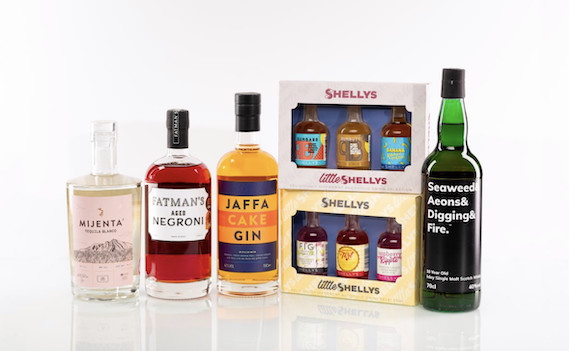The team analysed how the easing of lockdown measures has affected consumer drinking habits, and predicted what we can expect in future within the world of drinks:
RTDs, pre-bottled cocktails, and mixers continue to grow
Perhaps unsurprisingly, with outdoor drinking prevailing as the weather improved throughout the year, RTDs and pre-bottled cocktails remain strong from last year. This also ties in with consumers realising the ability (and necessity) to create cocktails at home, which explains the spike in mixers. While the mixers category began growing in April 2020, from April to June this year, we recorded our highest ever peak sold in the category. The launch of the Drinkworks Home Bar, available exclusively from Master of Malt in the UK, is a testament to the increase in drinking at home, striking a balance between convenience and luxury.
Flavoured gin on the rise, and whisky remains strong
While gin is still very much on the rise, it’s most notably flavoured gins that continue to flood the market. Jaffa Cake Gin is one such success, launched by Atom Labs [part of the same group as Master of Malt] in March 2020 and remaining in our top three best-selling gins throughout 2020 and 2021. But how much more can the market take? We wonder whether, like vodka, after a heavy saturation of the market, producers will return to more authentic flavours and put greater importance on provenance. Having said that, the growth of gin pales in comparison to our whisky sales, which represent a large proportion of our business. Whisky was our best-selling category in 2020, closely followed by gin. So far in 2021, it didn’t just remain strong, but grew even stronger, as we sold over 50% more bottles of whisky than gin.
Sustainability taking centre stage
We predict that sustainability in spirits will only continue to become more of a concern for consumers, and in turn for producers. From Tequila and whisky to beer, more brands are now putting environmental ethics at the forefront of their marketing and practises. The Base Spirits range of high-quality, cocktail-ready affordable spirits is now available in 10-litre bag-in-boxes, exclusively through Master of Malt Trade. This new packaging removes more than 14 bottles worth of glass and packaging – more than 41% of the weight, and 7kg in total, reducing the carbon footprint in terms of both producing the bottle and transporting it. In a similar vein, Talisker revealed new packaging for its 10-year-old expression in June, reducing its weight by 6% and increasing its recyclability by 99.8%. While it may be more expensive to buy sustainable spirits and drinks, analytics show that engine searches for “cheapest” have been dropping, while those for “best” have been growing over the same period. Consumers are growing wise to what constitutes towards the quality of a spirit and are more than happy to buy less, but better.
Scotch appealing to younger drinkers
Scotch whisky marketing is changing as the category looks to recruit a younger demographic (of legal drinking age, of course). Scotch in particular has struggled with its image, and now it’s dusting off the cobwebs, with TV-themed expressions and playful bottlings like Glenmorangie A Tale of Cake. Eye-catching younger-orientated digital marketing accompanies these releases, showing that what was previously seen as a dusty, older category can adapt to the shifting digital landscape.




